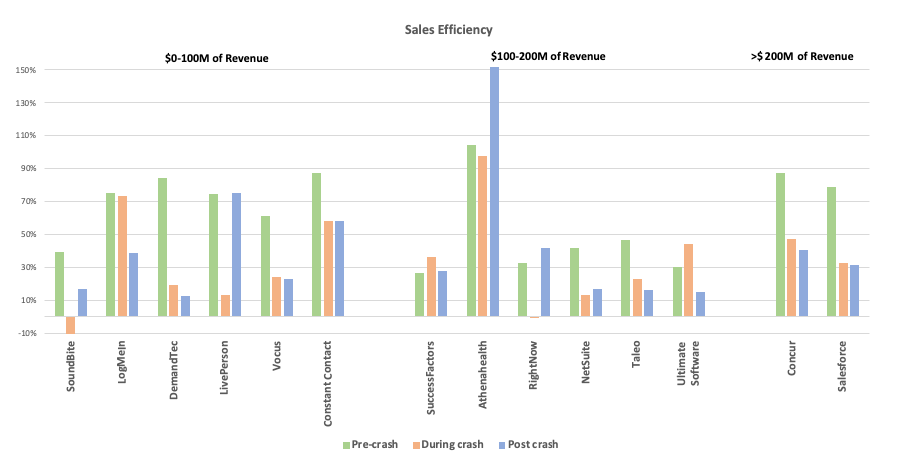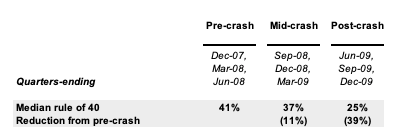Lessons in SaaS from the 2008 downturn — what can we expect?
We are all facing the same existential threat right now — and it’s profoundly more challenging than anything else most of us have experienced. At Salesforce, our priority has been on making sure our employees, families, and communities are safe and healthy. We’ve also maintained our focus on customer success and Salesforce has shared a number of valuable resources to help our customers navigate this unchartered territory.
At Salesforce Ventures, we are acutely aware that founders and teams across the globe are struggling with how to make difficult and sometimes painful decisions — what course of action to take, how to rewrite 2020+ budgets, and what assumptions to make around customer adoption, revenue growth, sales efficiency, and cash burn. Of course, startup CEOs are always operating in uncertain conditions, but the current situation calls for an entirely new level of thoughtfulness, analysis, and grit.
This pandemic is obviously different than any other downturn and so much is still unknown, but I thought it might be helpful to take a look at some data around the last big financial crisis of 2008/2009 to see if there are any valuable lessons we might be able to draw on.
For context, during the 2008 downturn, the Nasdaq index fell by nearly 50%. It took about 170 days for the market to hit bottom. So far in 2020, the Nasdaq has fallen about 30% in less than 30 days due to COVID-19, making this one of the fastest and steepest declines in history.
Here are three metrics and how public SaaS companies were impacted in 2008:
Revenue Growth
For this analysis, we’ve looked at three periods, each comprised of three quarters: pre-crash, mid-crash and post-crash¹.

The median quarterly growth rate (YoY) prior to the crash was 44% growth. This fell to 11% in the 3 quarters after the trough of the crisis, representing a reduction in growth rate of 74%. Importantly, this was true regardless of ARR/revenue level. On a more positive note, SaaS companies did continue to grow (despite the lower rate), which is certainly not true of other industries during this period.
Sales Efficiency
It is pretty intuitive that sales efficiency will get worse in this period. But by how much? We’ve defined sales efficiency as the ratio between gross margin adjusted incremental quarterly revenue and S&M spend in the prior quarter.

A similar picture emerges, where sales efficiency deteriorated for almost every company in the benchmark.

Sales efficiency fell from 68% pre-crash to 30% post-crash, resulting in a 56% deterioration in efficiency. Interestingly, however, for many companies we started to see a rebound in efficiency 6–8 quarters after the trough (as sales efficiency improved from 28% during the crash to 30%).
Cash Burn / Profitability
Finally, we’ve turned our attention to cash burn and profitability. Here we use EBITDA as a proxy for cash flow and look at the evolution of the “rule of 40” over this period (which suggests that a software company’s growth rate + FCF margin should combine to ~40% or more).

Most companies saw significant declines here as well, as sales efficiency deterioration, lower revenue growth and large people costs resulted in lower EBITDA margins.

Companies here saw a 39% decline in profitability, as the median “rule of 40” fell from 41% pre-crash to 25% post-crash.
Summary
The next few quarters will be tough for all of us. The good news is that every company in this benchmark survived the crisis, and went on to become an even bigger company. Recovery rates were also relatively quick, and definitely quicker than other industries (as growth picked up by Q4 2009).
This will be a defining moment for us all, both professionally and personally. It’s more important than ever for all of us to do what we can to plan ahead while also ensuring the well-being of our families and communities.








